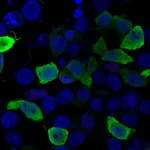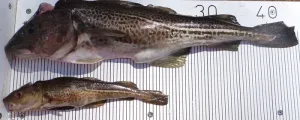(Press-News.org) Most immunotherapies, which aim to boost T cell activity, work poorly in treating estrogen receptor-positive (ER+) breast cancer. Targeting a different type of immune cell called macrophages could be a more effective approach, suggests a comprehensive new analysis of invasive ER+ breast cancers led by University of Pittsburgh School of Medicine scientists.
Published today in Nature Cancer, the study found that macrophages were the dominant immune cell infiltrating ER+ invasive lobular carcinoma (ILC) and invasive ductal carcinoma (IDC) tumors. Detailed spatial analysis of tumor regions also revealed distinct immune cell “neighborhoods” associated with good patient outcomes.
“In the past, IDC and ILC were lumped into the same category and treated as the same disease. But in the last few years, strong evidence has emerged that that they are, in fact, distinct diseases,” said lead author Sayali Onkar, Ph.D., currently a senior scientist at Mount Sinai Icahn School of Medicine, who did this research as a graduate student at the University of Pittsburgh School of Medicine. “We discovered important similarities and differences in the immunological landscape of IDC and ILC, suggesting that tailored immunotherapies are needed to target these diseases.”
Immunotherapies help the immune system to better recognize and destroy cancer cells. While powerful treatments for many cancers, including melanoma and lung cancer, immunotherapies tend to be less effective against most breast cancer subtypes — reviewed in a recent Cancer Discovery article led by Onkar and Neil Carleton, a student in the Medical Scientist Training Program at Pitt.
“Breast cancers, particularly those that are ER+, don’t respond well to immunotherapy, so there is a huge unmet need for new therapies,” said co-senior author Dario Vignali, Ph.D., distinguished professor and interim chair of the Pitt School of Medicine Department of Immunology and associate director for scientific strategy and co-leader of the Cancer Immunology & Immunotherapy Program at UPMC Hillman Cancer Center. “By testing our hypothesis that IDC and ILC differ in their immune response, we can inform where we should focus attention for development of novel approaches.”
The research was possible due to a collaboration between Vignali and co-senior author Steffi Oesterreich, Ph.D., co-leader of the Cancer Biology Program at UPMC Hillman and professor at the University of Pittsburgh School of Medicine’s Department of Pharmacology & Chemical Biology, who have special expertise in cancer immunology and breast cancer biology, respectively.
By analyzing the tumor microenvironment — the complex ecosystem of cells, blood vessels and molecules surrounding a tumor — of patient samples, the researchers found that macrophages were the most common immune cell in both ER+ ILC and IDC, but they were especially prominent in ILC.
“To improve outcomes for patients with these diseases, we need to identify druggable targets focusing on macrophages,” said Oesterreich, who also holds the Shear Family Endowed Chair in Breast Cancer Research and is co-director of the Women’s Cancer Research Center, a partnership between UPMC Hillman and Magee-Womens Research Institute. “There is a huge lack of macrophage-targeting immunotherapies in development – the vast majority focus on T cells.”
Next, the researchers used state-of-the-art technology to analyze the spatial location of macrophages, T cells and other immune cells throughout the tumor. They identified unique cellular “neighborhoods,” or clusters of cells, in IDC and ILC tumors.
In IDC, one type of neighborhood dominated by macrophages and CD8+ T cells was associated with increased disease-free survival in patients, suggesting that these immune cells work together to kill cancer cells.
“These findings tell us that zooming out to look at the architecture of the tumor and understanding how immune cells influence each other, rather than simply looking at overall quantities of cells, is important,” said Onkar. “Targeting cellular neighborhoods within the tumor microenvironment could have a meaningful impact on patient outcomes.”
Looking at the types of macrophages inhabiting the tumor microenvironment, the team found that ILC had more tumor-promoting M2-like macrophages and fewer tumor-fighting M1-like macrophages than IDC.
According to the researchers, the study provides an important resource for future research toward developing novel immunotherapies or targets that focus on macrophages. Removing harmful M2-like macrophages or reprogramming them to become M1-like macrophages could be promising avenues for ILC treatments, and better understanding of the partnership between macrophages and T cells in ER+ breast cancer could lay the groundwork for combination therapies in this disease.
Other authors on the study were Jian Cui, Ph.D., Jian Zou, M.S., Carly Cardello, B.S., Anthony R. Cillo, Ph.D., April Sagan, Ph.D., Hatice U. Osmanbeyoglu, Ph.D., Priscilla F. McAuliffe, M.D., Ph.D., George C. Tseng, Sc.D., Adrian V. Lee, Ph.D., Tullia C.Bruno, Ph.D., all of Pitt and UPMC; Mostofa Rafid Uddin, B.Sc.Engg., of Carnegie Mellon University; Marion Joy, Ph.D., and Peter C. Lucas, M.D., Ph.D., both of the NSABP Foundation, UPMC and Pitt; and Katherine L. Pogue-Geile, Ph.D., of the NSABP Foundation.
This research was supported by the National Institutes of Health (R35 CA263850, R01 CA203689, P01 AI108545, R01 CA252378, R35GM146989 and T15 LM007059-35), the National Cancer Institute (T32 CA082084), the Hillman Postdoctoral Fellowship for Innovative Cancer Research and the Magee-Womens Research Institute and Foundation.
##
END
Study of immune ‘neighborhoods’ highlights macrophages as key players in invasive breast cancers
2023-03-16
ELSE PRESS RELEASES FROM THIS DATE:
Genetic causes of three previously unexplained rare diseases identified
2023-03-16
New York, NY (March 16, 2023) – Using a new computational approach they developed to analyze large genetic datasets from rare disease cohorts, researchers at the Icahn School of Medicine at Mount Sinai and colleagues have discovered previously unknown genetic causes of three rare conditions: primary lymphedema (characterized by tissue swelling), thoracic aortic aneurysm disease, and congenital deafness. The work was done in collaboration with colleagues at the University of Bristol, UK; KU Leuven, Belgium; the University of Tokyo; the University of Maryland; Imperial College London, and others from around the world.
An enhanced understanding of the functions ...
NYU Abu Dhabi researchers discover a new approach to harvesting aerial humidity with organic crystals
2023-03-16
Fast facts:
The global shortage of fresh water currently affects hundreds of millions of people around the world, and it is estimated that by 2025, 1.8 billion people will experience severe water scarcity and hunger due to loss of fertile farming lands caused by droughts.
The discovery of alternative water-harvesting technologies holds the potential to alleviate the foreseeable socioeconomic impacts of severe water scarcity.
Abu Dhabi, UAE, March 16 2023: Researchers of the Smart Materials Lab (SML) and the Center for Smart Engineering Materials (CSEM) at NYU Abu Dhabi (NYUAD) have reported a novel method of harvesting water from ...
Dual immunotherapy plus chemotherapy before surgery improves patient outcomes in operable lung cancer
2023-03-16
HOUSTON ― In a Phase II trial led by researchers from The University of Texas MD Anderson Cancer Center, adding ipilimumab to a neoadjuvant, or pre-surgical, combination of nivolumab plus platinum-based chemotherapy, resulted in a major pathologic response (MPR) in half of all treated patients with early-stage, resectable non-small cell lung cancer (NSCLC).
New findings from the NEOSTAR trial, published today in Nature Medicine, provide further support for neoadjuvant immunotherapy-based treatment as an approach to reduce viable tumor at surgery and to improve outcomes in NSCLC. The combination also was associated with an increase in immune cell infiltration and a favorable gut microbiome ...
How fishermen benefit from reversing evolution of cod
2023-03-16
Leipzig. Intense fishing and overexploitation have led to evolutionary changes in fish stocks like cod, reducing both their productivity and value on the market. These changes can be reversed by more sustainable and far-sighted fisheries management. The new study by researchers from the German Centre for Integrative Biodiversity Research (iDiv), Leipzig University and the Institute of Marine Research in Tromsø, which was published in Nature Sustainability, shows that reversal of evolutionary change would only slightly reduce the profit of fishing, but would help regain and conserve natural genetic diversity.
The impact of global fisheries on marine ecosystems ...
Displays with more brilliant colors through a fundamental physical concept
2023-03-16
A research team from the University of Cologne (Germany) and the University of St Andrews (Scotland) has shown in a new study how a fundamental physical concept can be used to boost the colour brilliance of smartphone, computer or TV screens without cutbacks in energy efficiency. The results have been published in Nature Photonics.
Organic light-emitting diodes (OLEDs) have conquered the market for displays in recent years – from high-resolution smartphone to wall-sized television screens. However, industry and science face several challenges in creating the next generation of devices ...
Hot topic – how heat flow affects the Earth’s magnetic field
2023-03-16
Hot topic – how heat flow affects the Earth’s magnetic field
Compass readings that do not show the direction of true north and interference with the operations of satellites are a few of the problems caused by peculiarities of the Earth’s magnetic field.
The magnetic field radiates around the world and far into space, but it is set by processes that happen deep within the Earth’s core, where temperatures exceed 5,000-degress C.
New research from geophysicists at the University of Leeds suggests that ...
Case report of first mixed race woman possibly cured of HIV published in Cell
2023-03-16
A new method to cure HIV—by transplanting HIV-resistant stem cells from umbilical cord blood—has yielded long-term successful results, say scientists. The approach was successfully used to treat the “New York patient,” a middle-aged woman with leukemia and HIV who self-identifies as mixed race, who has been without HIV since 2017. Using stem cells from cord blood rather than from compatible adult donors, as has been done previously, increases the potential to cure HIV via stem cell transplantation ...
Genomic analysis shows the Amazon’s Ashaninka people are made up of two subgroups with distinct histories
2023-03-16
The Ashaninka are the most numerous Indigenous people living in the rainforests of Peru and Brazil where they inhabit a crucial area between the Andes and sources of the Amazon River. And yet, despite the size of the population and their importance in the past and present, their genetic history has remained understudied.
Now a team of researchers reporting in the journal Current Biology on March 16 has analyzed the genomes of more than 50 individuals to clarify the group’s interactions with nearby South American regions, including Central America and the Caribbean. ...
Indigenous Ashaninka DNA helps geneticists write new chapters of pre-colonial history in South America
2023-03-16
Geneticists have written new chapters in the reconstruction of pre-colonial Americas history after using DNA from the indigenous Ashaninka people from Amazonian Peru. They have discovered previously unexpected levels of genetic variation in this group and uncovered a strong hint that these people were involved in a South-to-North migration that led to the transition from an archaic to ceramic culture in the Caribbean islands.
The dramatic impact of European colonisation during the second half of the last millennium has strongly influenced the genetic history of the Americas, making the reconstruction ...
Financial hardship and employment loss among adults with disabilities during COVID-19
2023-03-16
About The Study: This survey study found that people with disabilities were more likely to report household employment loss and financial hardship during the initial COVID-19 pandemic, which are especially pronounced among racial and ethnic minority respondents. These findings suggest people with disabilities may be disproportionately affected by the initial pandemic and may require additional resources and policy strategies (e.g., training programs, workplace accommodations) as several labor markets adapt to the pandemic (e.g., shifting to remote working).
Authors: Kea Turner, Ph.D., M.P.H., M.A., of the H. Lee Moffitt Cancer Center ...







